Fashion Model Agancy Ask for Payment in Advance
Modeling is a time-consuming, demanding and cutthroat profession. But almost of all, it tin exist prohibitively expensive.
Unlike most U.S. workers, models regularly see huge chunks of their earnings -- whether it's a third, more than than half, or even entire paychecks -- disappear right before their optics.
One male model, for instance, showed CNNMoney a statement where a $500 catalog shoot turned into a $15 check. Meanwhile a young female model saw almost half dozen years of earnings shrink from $74,000 to less than $xxx,000.
Models typically aren't treated equally employees, so they usually aren't guaranteed to receive minimum wage, overtime, dejeuner breaks, prompt paychecks or many other protections that are common in the workplace.
Instead, they are often considered contained contractors. And this means that fifty-fifty later on paying their agencies fat commissions of 20% or more than, models often have to foot the neb for concern expenses. These include everything from expensive plane tickets and group housing to the many promotional materials -- similar websites, headshots and portfolios -- required to land jobs with clients.
Read more than almost the nighttime side of the modeling industry here
Several agencies, which often adopt to be chosen model direction companies, told CNNMoney they invest significant resource to aid their models succeed, and that the costs models face are just part of the business.
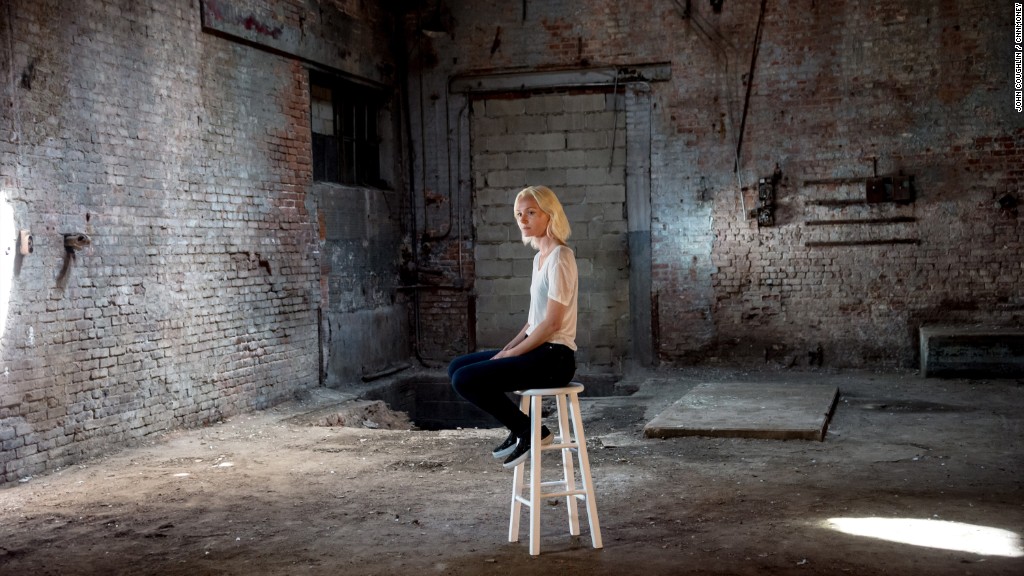
Only models don't e'er run across it this manner. In its ongoing investigation into alleged labor abuses and lack of regulation in the manufacture, CNNMoney interviewed dozens of models who say information technology'due south these outrageous fees and expenses that make it so difficult -- and in some cases, impossible -- to get ahead.
Double-dipping and double-digit commissions
Commissions are the bread and butter of the modeling industry.
Not only practice agencies commonly charge their models a 20% commission, but they accuse the model's client a similar amount, according to models and attorneys. A $5,000 task, for example, would typically result in a $2,000 windfall for the agency, which tin can end up being more than what the model herself would accept home in some cases.
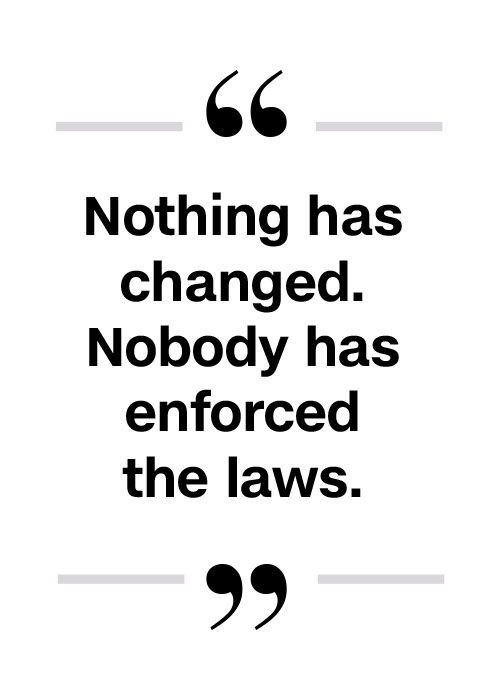
A pay stub from one model showed how a large $xxx,000 payday became only $half dozen,475 after a twenty% commission and a big revenue enhancement hit (though she'due south hopeful she'll get some of that back at tax fourth dimension). Aye, this may sound like a lot. But this is before any other expenses are taken out. And considering the pay is wildly inconsistent, many models are forced to rely on a ane-fourth dimension payment like this for months or even longer. Another model, for example, saw a $10,000 job shrink to less than $4,000 afterwards taxes, commissions and expenses.
To charge these loftier commissions, some attorneys argue that companies based in New York, the heart of the modeling industry, are masquerading every bit "management companies" instead of employment agencies. Critics say that past doing this, they are skirting the land police force that limits employment agency fees. The firms counter that they are following the law since they provide their models with a variety of management services, beyond simply finding them piece of work.
Email us tips and your own stories
More than than a decade ago, a form-action lawsuit challenged these commissions. Agencies paid out a multi-million dollar settlement and pledged to be more transparent.
But even after all that, the xx% committee however reigns supreme, and it seems the only models able to negotiate a lower commission are those already earning acme salaries.
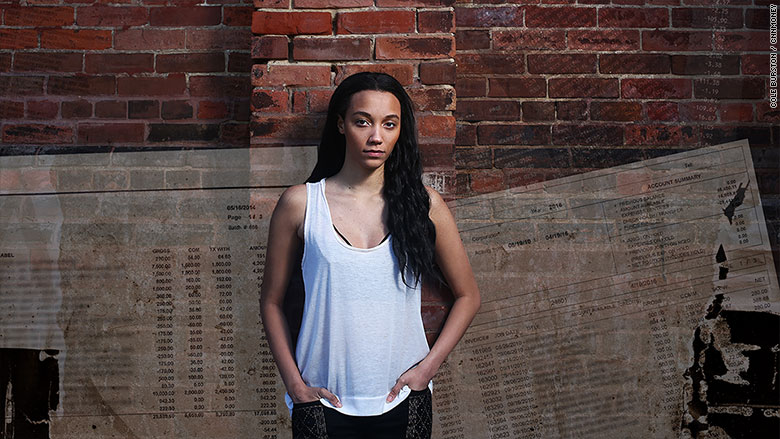
Lorelei Shellist, a longtime model who has appeared in magazines similar Faddy and Marie Claire, was part of that class action suit confronting the agencies. While she says she moved on from the lawsuit years ago, she is still worried nearly working conditions for current models and can't believe agencies are still getting away with charging 20% commissions.
"Null has changed. Nobody has enforced the laws," she said. "What they are doing is they are double-dipping."
Walking lessons, dermatology visits and photo shoots
Beyond commissions, at that place's a never-ending listing of expenses and fees that models tin can rack up.
For a get-go model, the offset-up costs tin be specially daunting -- often landing them in debt before they fifty-fifty book their beginning large task.

Take Jamaican model Alexia Palmer, who was brought to the United States by Trump Model Management afterwards being discovered in a Caribbean model competition.
According to financial records included in a lawsuit she filed against the agency, Palmer racked up $12,000 in expenses in a little over three years.
Test shoots, where models exercise in forepart of the photographic camera, price Palmer more than $ii,000. Walking lessons were $75 a pop, a dermatology visit that she says was recommended past her agency cost her $200 and a promo video was $250. She was also charged $900 for a "show package," which showcases the agency's models to endeavour to land them jobs in runway shows.
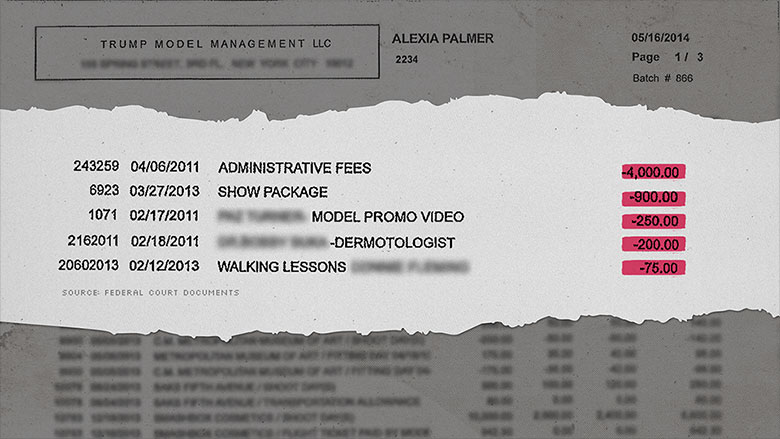
And then there were more than $100 in courier fees (typically charged for transporting a model's portfolio to potential clients), another $400 in transportation costs and $4,000 in vague administrative fees.
Related: Trump'southward modeling agency broke immigration law, experts say
Palmer'south fiscal statements also show that she took out a number of cash advances from the agency, a common industry do as models await months for paychecks to materialize. Information technology'southward unclear how much Palmer paid her agency in fees or interest for these advances, but others have said they were charged fees of around v%.
All of the expenses and fees, along with the commissions and taxes Palmer paid, left her with take-habitation pay of less than $5,000 over three years. And based on the financial documents filed by Trump Model Direction in Palmer'due south court case, information technology appears she was in debt to the agency for more a yr as she racked up expenses but booked few paying jobs.
Considering she had been promised a salary of $75,000 per twelvemonth on official government immigration documents, she has been fighting to get the money she believes she is owed. Trump Model Management has said through its attorney that the salary was zip more than a "guesstimate" and that Palmer signed a contract like-minded to reimburse the bureau for all expenses -- a standard industry exercise.
'Perpetual state of dependence'
On pinnacle of all the business expenses, Palmer'south financial statements also prove she took out a number of cash advances from the agency.
Advances are common in the industry as models wait months for paychecks to materialize. It'due south unclear how much Palmer paid in fees or interest, simply others say fees of around 5% are the norm.
Like Canadian model Ty States, who said she oftentimes relied heavily on advances from her agency.
"Advances were the simply mode you lot could actually afford to get anything," she said. "They are still making money off of you, but it'due south like I need to consume and pay my bills."
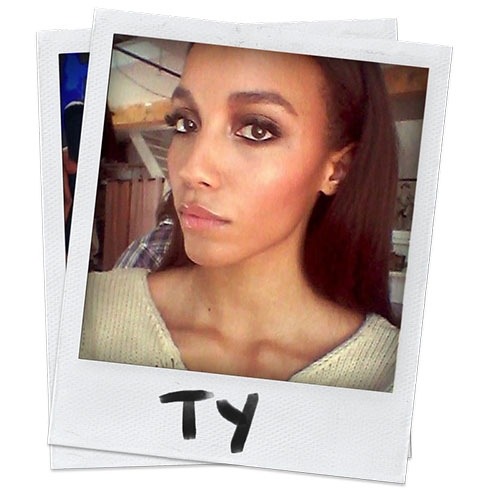
Currently, a proposed course-action lawsuit is taking on this practise.
Filed against a number of top modeling agencies (not including Trump's), the accommodate challenges the fairness of these advances, forth with a number of other alleged financial abuses.
"[Cash advances] kept the models in a perpetual land of dependence," attorneys at Quinn Emanuel wrote in court filings. "This do is particularly insidious considering the models only needed the advances in the first place considering of defendants' unlawful practise of non paying a model his or her wages until many months after the work had been performed (if ever)."
Management companies named in the lawsuit take denied whatever wrongdoing in court. And one of the companies, MC2, told CNNMoney that practices like these are meant to "assist their models succeed."
Customer Christmas gifts and flowers
The fees don't end when a model starts condign successful. Many told CNNMoney that they accept been charged for everything from overpriced and cramped model housing to their agency'due south own office supplies.
One of the most mutual expenses for working models is a "website fee," which can run hundreds of dollars a year for a single model. And so there are fees the agency charges to print "comp cards," which are like business cards for models except that they are covered in photos. These tin cost upwards of $1 a card, and are ofttimes bought in batches of hundreds at a time. One model says her bureau fifty-fifty charged her for cards that had her proper noun misspelled on them.

For nigh of these expenses, the agency pays upfront and takes them out of the model'due south pay -- meaning that many models have no idea when they are going to be charged for something.
"They don't ask if they can spend your money, they but do it," said old model Madison Schill, who started in the industry at historic period 15 and has walked runways for the likes of Marchesa and Oscar de la Renta. While she knew her contract authorized the agency to deduct whatever and all expenses, she said she had little control or clarity most where her coin was going.

Another model, Louisa Raske, says she was shocked when she realized she had been charged for the flowers her agency bought her on her own birthday (the agency that she claims charged her for the flowers did not reply to requests for comment). And Raske's past statements from a unlike agency show that $250 was deducted from her paycheck for client Christmas gifts that she says the bureau purchased without asking her.
Want updates on this and other investigations? Sign up here
"They kind of have the mental attitude like, 'What are you lot going to practice about it?'" said Raske, who is role of the proposed class-activity lawsuit challenging industry labor practices at many of the industry's top agencies.
An attorney representing one of the defendants in that lawsuit said that management companies are doing a favor for models by shouldering these expenses to aid them get their human foot in the door.

Plus, because agencies more often than not don't go afterwards the debts of those who give up and get out the industry, they claim to recoup only a fraction of the money they spend on many aspiring models.
"Until someone becomes a commercially viable model, it'southward their agencies that pay their rent, accelerate their money, pay for the pictures that go in their 'lookbooks,' and help them with stylists," said attorney Robert Hantman, speaking about his experience representing a number of agencies (too as several models). "They spend a lot of money trying to develop the models."
Lots of travel, little pay
Just considering a customer wants a model to come to a studio or exotic location for a shoot doesn't mean they will pay to get them at that place.

While some jobs cover the cost of travel, others practise non -- leaving the agencies to book the travel and the models to pay their own way.
Male model Alex Shanklin, for example, says he was excited to book a $1,000 catalog shoot in New York a few years agone. But after the toll of his plane ticket from Texas and other travel expenses were subtracted from his pay, he claims he received a check for merely $150 later on around a twenty-four hour period of work plus travel -- and he didn't even get it until more than a calendar month later.
"This blazon of scenario is extremely mutual for models, considering we tend to work nether whatsoever circumstances presented to survive," said Shanklin, who still works in the industry and has been in ads for a number of major brands.
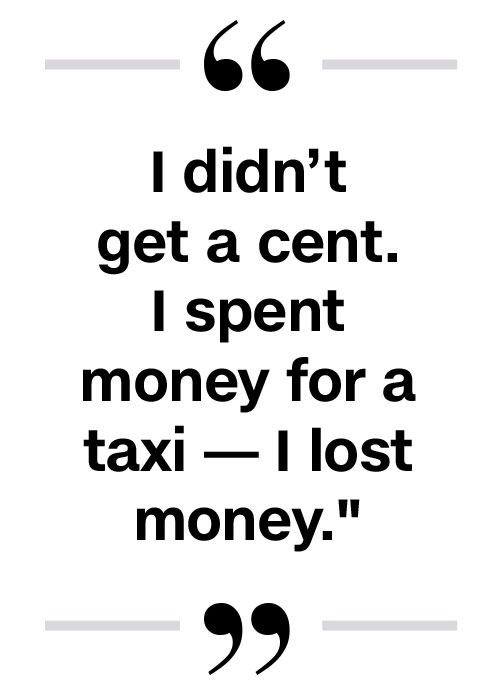
Meanwhile, retired model Carina Vretman remembers when she got a free trip to Denmark for a catalog photo shoot but ended upwards making no money for the actual job. Instead, she says the German modeling agency that booked the gig told her she owed them money for past promotional costs and other expenses. (In fact she believes she still owes that bureau 700 euros).
"I didn't get a cent," said Vretman. "I spent money for a taxi -- I lost money."
Don't enquire questions
Many models interviewed by CNNMoney say that what'due south fifty-fifty worse than the fees is the consummate lack of transparency about what they're being charged for and why -- with the statements they receive doing picayune to explain the laundry list of deductions being taken out of their pay.
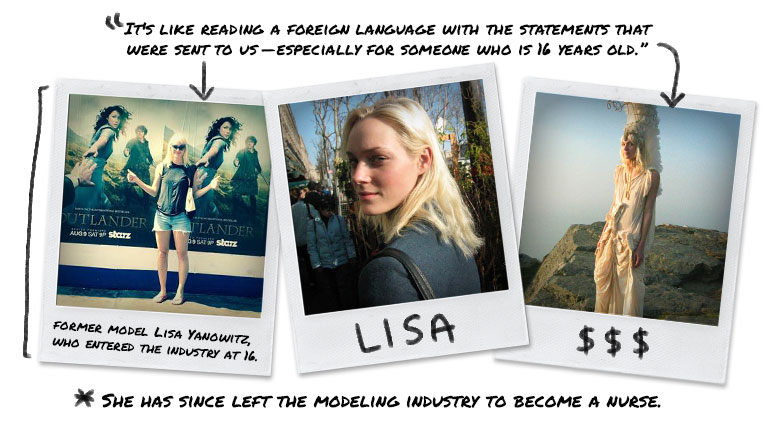
"It'southward like reading a foreign language with the statements that were sent to us -- peculiarly for someone who is 16 years sometime," said former model Lisa Yanowitz, who entered the industry at that very historic period and has walked international runways for clients like Chanel, Burberry, and Balenciaga. She has since left the modeling industry to become a nurse.
Another model, Grecia Palomares, received a check in 2014 where her agency had deducted 70% of the $1,000 in pay for "expenses," according to documents from the proposed class-activity lawsuit.
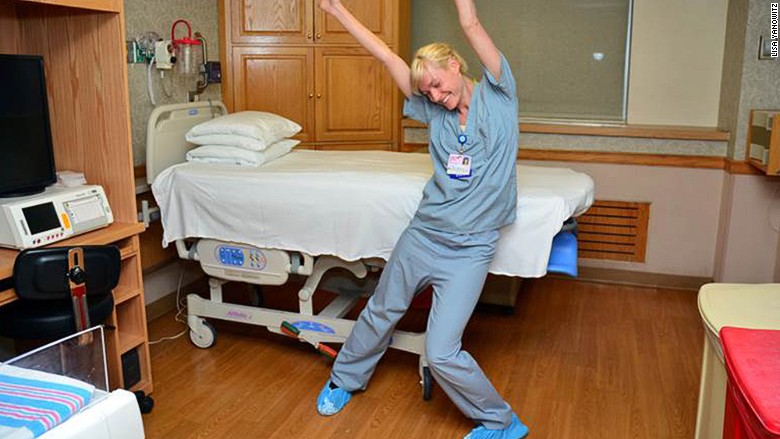
Palomares, who has worked for designers like Christian Dior, Valentino and Roberto Cavalli (none of which were the client in this specific instance), claims all she was told was that the expenses included $450 for "WRITTEN OFF REVENUES" and "$250 for "APLD BAL West ACCT."
The agency, Wilhelmina, did not respond to requests for comment, though it has disputed any wrongdoing in court. And Palomares says to this day she nonetheless has no idea where that money went.
And it'southward non uncommon for many models to stay silent -- afraid to ask whatsoever questions at all. They say that all too oftentimes, doing so results in a dead end, and that pushing also difficult could hurt their reputations with the agency and their potential to get more jobs.
"They accept more money, they have more than ability," said Palomares.
0 Response to "Fashion Model Agancy Ask for Payment in Advance"
Post a Comment